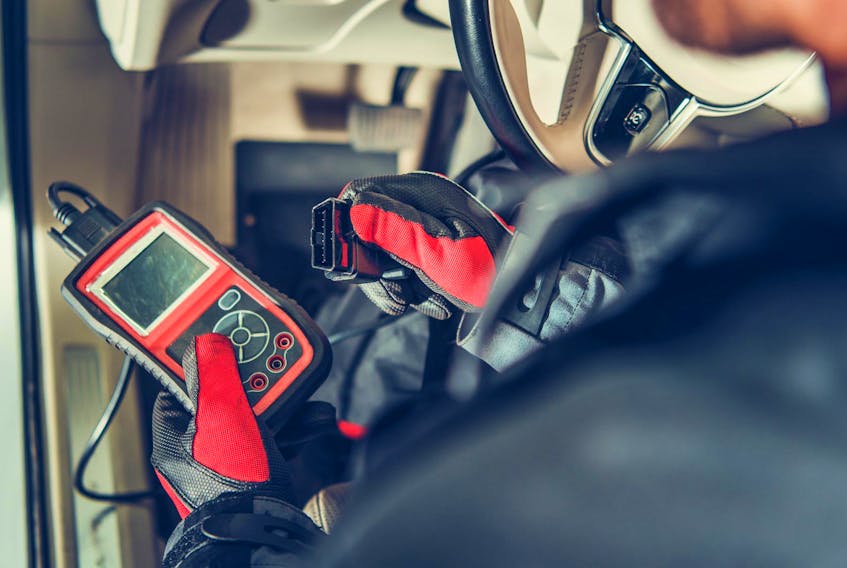QUESTION& ANSWER
Q: I have bought a scan tool code reader online. The problem is that when I plug the code reader in to the diagnostic connector on my 2000 Chev Silverado, nothing happens.
The code reader doesn’t even power up. I have tried with both the ignition key on and key off but no luck.
I don’t know what the problem is. Did I buy a faulty code reader or is there a problem with my truck. What do you think?
A: It could be a faulty code reader but I would suspect the problem is bad power or ground at the 16 pin diagnostic connector. Terminal 16 on the connector (it has numbers on it) is power for the code reader and there should be power there all the time.
Terminals # 4 and 5 are ground connections and should be connected to the chassis ground all the time. Even if there is a problem with vehicle communications, the code reader should power up when plugged in.
Check for power and ground at the respective terminals first. If you have both, then the code reader or its cable is faulty.
I have seen the fuse for terminal 16 blow many times. The cigarette lighter socket gets power from the same fuse and if someone has dropped a coin in the lighter socket then the fuse blows.
Q: I bought my 1991 Toyota truck new in 1990. It has a five-speed standard and four-cylinder 22R-E engine. It starts first turn of the key but when you go down the street it loses power.
You have to shift to second gear to move. It acts like you are giving it gas then letting up on it quickly, then another surge of gas and back and forth it goes until you go about 10 kilometres and then it works fine.
The truck has 90,000 km on it. It has had a new heat sensor put in it and was back to the dealer for new spark plugs, plug wires, distributor cap as well as all the fluids changed with no results.
A new manifold gasket and clutch cylinder were put on it. On the way home from this, it worked so bad I had trouble getting home. I took it back but no results.
I had several good mechanics look at it and even the dealer says they have no clues. I don’t know where to turn or what to do. I hope you can help.
A: 1991 was the first year for fuel injection on Toyota’s 22R-E engine but many of the emission controls were still vacuum operated.
On the engine there is a group of metal tubes and rubber hoses that are vacuum lines for various devices including the carbon canister control, distributor vacuum advance, EGR and other emission devices. A label under the hood shows how these lines should be connected.
If wrong, they can cause a variety of driving problems including your truck’s lack of power at times. Check all the lines to make sure they are connected properly.
If the vacuum line to the carbon canister is not correct, then a vacuum can be created in the fuel tank that can cause the surging and lack of power. A simple check is to remove the gas cap and try driving the truck. If it drives fine, then check the vacuum line, the valve on the carbon canister and the canister itself to see if the filter that allows air into the gas tank is plugged.
A faulty throttle position sensor will also cause a lack of power. Test the signal voltage from the sensor as the throttle is slowly opened. The voltage should increase as the throttle opens. If it drops momentarily at any point, then the throttle position sensor should be replaced.
Finally, The air flow sensor may be sticking. This truck uses a mechanical air flow sensor with a moveable vane inside.
As more air enters the engine, the vane opens further and sends an electrical signal to the computer to inject more fuel.
The vane may be sticking or the electrical circuit in the sensor could be worn. Either will cause a lack of power. Also check for air leaks between the air flow sensor and the intake manifold.
Any air leak, especially in the flexible ducting, will cause a lack of power.
Jim Kerr is a master automobile mechanic and retired teacher of automotive technology. Send your questions for Jim via email or mail them to: Herald Wheels, 2717 Joseph Howe Drive, P.O. Box 610, Halifax, N.S. B3J 2T2









